#Pharaoh Hatshepsut II
Explore tagged Tumblr posts
Text
Ancient Egyptians looking exactly like we do today
#King Setti I#The Noble Yuya#Tutankhamun#Prince Raa Hotep#Princess Neferet#Djoser#Ramses II#Hatshepsut#Imhotep#Queen Tiye#King Menkaure#Queen Khamerernebty#Nefertiti#Ancient Egypt#Egypt#Pharaoh
2 notes
·
View notes
Text
Egypt... the best of the River Nile
Egypt, a land of ancient wonders and modern marvels, beckons travellers with its rich tapestry of history, culture, and natural beauty. #Egypt #RiverNile #Tutankhamun #AncientHistory #History #Luxor #Aswan #RaII #Nile #Cruise #ValleyoftheKings #KingTut
Egypt Egypt, a land of ancient wonders and modern marvels, beckons travellers with its rich tapestry of history, culture, and natural beauty. Among its many jewels, Luxor and Aswan stand out as iconic destinations, offering a glimpse into the grandeur of bygone eras. These cities, situated along the life-giving River Nile, form the heart of many Nile cruises, tracing a route that has been…
#Abu Simbel#adventure#Ancient Egypt#Aswan#blog#complete#Cruise#Edfu#Egypt;#Esna#Karnak#Kom Ombo#Luxor#Luxor Museum#Nile#Nile Cruise#Pharaohs#Ra#RA II#River Cruise#River Nile#Temple#Temple of Karnak#Temple of Khnum#Temple of Queen Hatshepsut#Temple of Sobek#The Ra#travel#travelblog#Tutankhamun
2 notes
·
View notes
Text
Transmasculinity Throughout Time: Hatshepsut
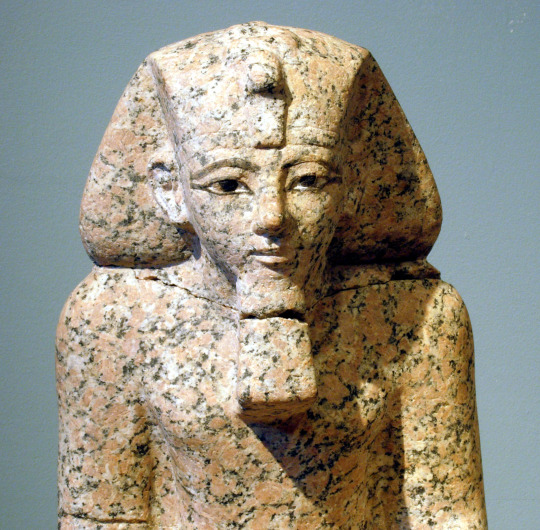
Kicking off this first post in what I hope to be a long series by saying that I am just a guy who likes obsessively researching things and I am absolutely not a historical expert, and in this case, not an Egyptologist. My perspectives and interpretations are my own. You are welcome to have other ones.
Hatshepsut is known as Egypt’s first and only female pharaoh, and is discussed as such throughout almost all material about them. I will be nonetheless using they/them pronouns to refer to them, but during their life they used both masculine and feminine pronouns. The tendency to project modern ideas onto historical figures is common. Especially in the case of people who exhibited signs of transmasculinity, it is common for their entire lives to be reduced to “women who cosplayed as men for power” which is problematic for obvious reasons. Cis men coveting masculinity for the pursuit of power in a patriarchal society is never a reason they are actually women, yet it is okay to do this with historical transmasculine people in the name of feminism? There is a clear double standard. So, I will be using gender neutral pronouns because we can’t really know if Hatshepsut was alive today whether they would identify as a woman, trans man, nonbinary or as none of those identities. I am simply going to be discussing the history and some of my interpretations.
In the context of ancient Egypt, the pharaoh was a living embodiment of the masculine god Horus. Hatshepsut embraced this role after coming to power, ascending from the position of queen regent alongside a child king once their former husband Thutmose II had passed, to “his majesty the king herself.” As their rule progressed, they were depicted as more and more masculine in statues and reliefs, using the same ceremonial fake beard as male pharaohs, muscles, and other masculine signifiers. They didn’t stop wearing makeup and jewelry when presenting as a male king though, which some historians take as evidence to support a female gender identity - it could mean that, but it could also just mean they liked to be fashionable and didn’t subscribe to restrictive gender roles!
Like kings before them, Hatshepsut emphasized their connection to the gods by telling a story to justify their rule. However, the story they told had to be exceptional - and it was. Hatshepsut’s throne name, Maatkare, translated to “truth is the soul of the sun god.” This demonstrated a connection to the sun god, Amun or Ra, and to Maat, the tradition of maintaining harmony in ancient Egypt. The story was that Amun had appeared to their mother who had conceived Hatshepsut for the purpose of being king, commanded by the god of creation Khnum, to “fashion [them] better than all gods” with “the great dignity of a king.” In carvings, Khnum created Hatshepsut as a little boy. This explanation for their lineage is especially interesting because it emphasizes their connection both to their mother’s bloodlines and to being the child of Amun, not ruling as just a queen regent, but as a king.
During their rule of 20 years, Egypt’s trade flourished and there was an immense period of construction during which countless buildings and statues were created, and temples renovated. Unfortunately after their death, extreme measures were taken by Thutmose III to erase all records of Hatshepsut from existence in order to preserve the line of male kings. These efforts were primarily successful, and much of their history has been lost to time. There are many things about Hatshepsut that we will never know.
#transmasculinity throughout time#transandrophobia#transmisandry#antitransmasculinity#transmasculine experiences#trans men#transmasc#hatshepsut#ancient egypt
158 notes
·
View notes
Text

Foundation Stone with Inscriptions
Egyptian, 1479-1458 BCE (New Kingdom)
Daughter of King Thutmose I and wife of her half-brother, King Thutmose II, Queen Hatshepsut eventually ruled Egypt as pharaoh in her own right. This commemorative stone was placed at a construction site, probably of the temple built for her at Deir el-Bahari, one of the most beautiful monuments of ancient Egypt. It bears the queen's throne name, Maat-ka-re, as well as that of the temple's architect, Senenmut.
105 notes
·
View notes
Text
Gallery Collection 001

Published: 2-21-2024 | Updated: N/A SUMMARY This is the first in a series of upcoming investment objects for Sims 2 – things your sims can use to generate income over time. From 1975-2000, Anheuser-Busch, Inc. commissioned 30 paintings of African kings and queens for an extended outreach and marketing campaign. This set of paintings features artwork from this amazing series. Celebrate Black History Month 2024! #co2bhm #bhm2024 #sims2bhm. *No copyright infringement intended – I own no rights to these images.

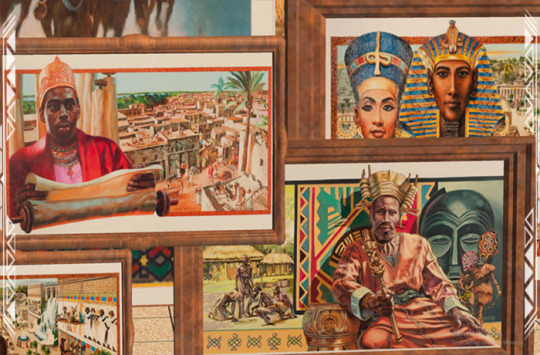
DETAILS Requires Sims 2. Requires Apartment Life for shiftability. §1K-15K | Buy > Deco > Wall Hangings Paintings are centered on 1-tile but cover more tiles than that. They come in various gallery sizes and images have been edited to fit the mesh. After purchase, their value increases by approximately 2% daily – watch out for burglars! Files with “MESH” in their name are REQUIRED. Frame recolors include EA/Maxis and yeti textures. Frame and painting recolors are merged into two files so you’ll have to take them or leave them. ITEMS Great Kings & Queens of Africa: Paintings 001-006 (92-764 poly) DOWNLOAD (choose one) from SFS | from MEGA
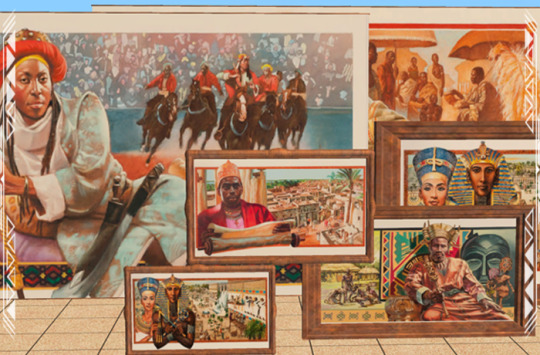
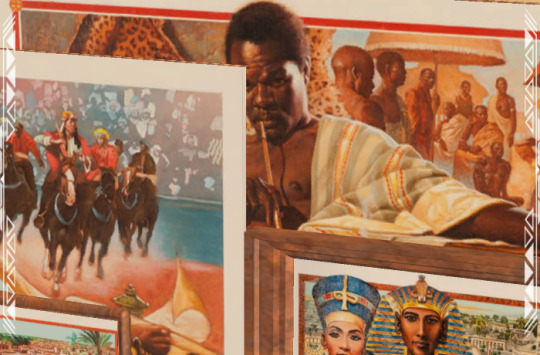
IMAGES
Akhenaton Pharaoh of Egypt (1375-1358 BC) by Barbara Higgins Bond
Alfonso I King of the Kongo (circa 1486-1543) by Carl Owens (1929-2002)
Askia Muhammaed Toure King of Songhay (1493-1529) by Leo Dillon
Benhanzin Hossu Bowelle—The King Shark (1841-1906) by Thomas Blackshear II
Cleopatra VII Queen of Egypt (69-30 BC) by Ann Marshall
Hannibal Ruler of Carthage (247-183 BC) by Charles Lilly
Hatshepsut The Ablest Queen of Far Antiquity (1503-1482 BC) by Dean Mitchell
Idris Alooma Sultan of Bornu (1580-1617) by Charles Lilly (1949-)
Ja Ja King of the Opobo (1821-1891) by Jonathan Knight
Khama III The Good King of Bechuanaland (1819-1923) by Carl Owens
Makeda Queen of Sheba (960 BC) by Debra Edgerton
Mansa Kankan Musa King of Mali (1306-1337) by Barbara Higgins Bond
Menelek II King of Kings of Abyssinia (1844-1913) by Dow Miller
Moshoeshoe King of Batsutoland (circa 1786-1870) by Jerry Pinkney
Mwana Ngana Ndumba Tembo—Ruler of the Angolan Tchokwe (1840-1880 circa) by Kenneth Calvert
Nandi Queen of Zululand (1778-1826 AD) by HM Rahsaan Fort II
Nefertari Nubian Queen of Egypt (192-1225 BC) by Steve Clay
Nehanda of Zimbabwe (1862-1898) by Lydia Thompson
Nzingha—Amazon Queen of Matambo (1582-1663) by Dorothy Carter
Osei Tutu King of Asante (circa 1650-1717) by Alfred Smith
Queen Amina of Zaria (1588-1589) by Floyd Cooper
Samory Toure The Black Napoleon of the Sudan (1830-1900) by Ezra Tucker
Shaka-King of the Zulus (1787-1828) by Paul Collins
Shamba Bolongongo African King of Peace (1600-1620) by Roy LaGrone
Sunni Ali Beer King of Songhay (circa 1442-1492) by Leo Dillon
Taharqa King of Nubia (710-664 BC) by John Thomas Biggers
Tenkamenin King of Ghana (1037-1075 AD) by Alexander Bostic
Thutmose III Pharaoh of Egypt (753-712 BC) by Antonio Wade
Tiye The Nubian Queen of Egypt (circa 1415-1340 BC) by Leonard Jenkins
Yaa Asantewa Queen of Ghana (1863-1923) by Barbara Higgins Bond CREDITS No copyright infringement intended – I own no rights to these images. Artwork and trademarks are the property of their respective creators and/or owners. If this exceeds fair use, please contact me via private message. Thanks: Simming and Sketchfab Communities. Sources: Any Color You Like (CuriousB, 2010), Beyno (Korn via BBFonts), Console Certificates (d_dgjdhh, 2019; 2011), EA/Maxis, Gyeongbokgung Sajeongjeon Painting (National Heritage Administration, 2024 via CCA; Sketchfab), Great Kings and Queens of Africa Series (Anheuser-Busch, Inc., 1975-2000; Kentake, 2016), Offuturistic Infographic (Freepik), Painting by Zdzislaw Beksinski (Sosnowski, 2018 via CCA), Yeti Metals (Shastakiss, 2017).
88 notes
·
View notes
Note
Hapshepsut?
Oh, you guys are funny. I make a note in my post about the oddity of people coming into my inbox with a single word prompt and that I have no idea how to respond except with a handful of information about the prompt, and now it's a real thing? That's just what I'm supposed to do?
Well, I might as well do so.
The modern legacy of Hatshepsut is dominated entirely by her womanhood. It completely disregards all of her accomplishments as a great and wealthy Pharaoh presiding over a time of great prosperity for Egypt, and it also overlooks the political and cultural climate of the time, which is as confusing as it is complicated.
This is much longer than my previous go about Ramses I, so I'm putting it under a read more.
Hatshepsut's Beginnings
When the layman thinks of Hatshepsut, they will think that she is the first female ruler of Egypt. This is their first mistake. There were many regents of Egypt; mothers who ruled on behalf of their young sons, who were not yet old enough to fully claim the throne. Beyond that there was also the female King Sobekneferu (12th Dynasty), as well as two Queens very early on in Egyptian history who might've been Pharaohs in their own right; Neithhotep (Early 1st Dynasty) and Merneith (1st Dynasty), both named for the warrior Goddess Neith, who held considerable importance in early Egyptian history. Both of these Queens have inscriptions and monuments attesting to their rule, but due to a lack of complete concrete evidence, it is difficult to now say whether they were regents or Pharaohs. Sobekneferu, from the 12th dynasty, was the first woman to take on the full royal titulary, assuming the position and title of Pharaoh completely. While her existence and rule is fully affirmed, there is little evidence left in the way of her accomplishments, as she ruled as the last Pharaoh of the 12th dynasty.
Khnumetamun Hatshepsut herself was born in 1507 BC to the Pharaoh Thutmose I and his Great Royal Wife, Ahmose. Her name, meaning 'Foremost of the Noble Women' was suiting to her––later in life she would be married to another one of her father's sons, Thutmose II, who was birthed of a secondary wife named Mutnofret. She was married before the age of 20 and assumed the highest standing title a woman could gain at the time; the God's Wife of Amun, giving her more power than even a Queen could achieve. To understand the importance of Hatshepsut even at this time, we must understand what it was to be the God's Wife of Amun. And remember, all this power and prestige is before she ever even became regent to her husband's son.
The God's Wife of Amun was a position held in Thebes, modern-day Luxor, and called Waset in ancient times. The title originates from the Middle Kingdom, and at that time, it was merely an honorific title for a noble woman who assisted the High Priest of Amun at Karnak Temple in his duties. By the New Kingdom, which was Hatshepsut's time, the God's Wife of Amun was powerful enough to influence policy and held considerable power and prestige, the peak of which was reached in the 3rd Intermediate Period, when a God's Wife of Amun ruled over Upper Egypt. The typical duties of a God's Wife of Amun were that of a high priest, and she would essentially be the female counterpart of the high priest of Amun, and took on many of his responsibilities alongside him. But the rewards for it were also plenty: "tax-exempt land, housing, food, clothing, gold, silver, and copper, male and female servants, wigs, ointment, cosmetics, livestock, and oil." (God's Wife of Amun, World History Encyclopedia, Joshua J. Mark) She would preside over the festivals of Amun and would be considered His consort, making her a divine being.
So this was Hatshepsut's position which was gifted upon her around the same time she was married to her half-brother, Thutmose II. Together they had a daughter whose name is Neferu-Ra, but this was their only child. The only viable heir to the throne after Thutmose II would have to be a son, which only came about through Thutmose II's lesser wife, Isis, who birthed Thutmose III. But Thutmose II, Hatshepsut's husband, died relatively soon after Thutmose III came to be, and so Thutmose III, the young son, could not fully be given the throne. Instead, Hatshepsut was made regent, and assumed all duties of state and Pharaoh while Thutmose III was growing up.
Proclaiming Herself Pharaoh
It was in the 7th year of her regency that the well-known history occurred. Hatshepsut crowned herself sole Pharaoh of Egypt. She assumed all royal titularies, titles, and names befitting a Pharaoh, but inscribed all of these using feminine forms. She passed down her title of God's Wife of Amun to her daughter, Neferu-Ra, and had her married to Thutmose III, likely in an attempt to consolidate power, and began to carve images of herself as a male Pharaoh.
I have commented on Hatshepsut before because some people like to claim that Hatshepsut is the world's first transgender person. This is incorrect. If she had wanted to represent as male, she would've gone about it differently, and to begin with, she would've changed her name. As I stated earlier, her name means "Foremost of the Noble Women"; this is a female name, and it would've been obvious to any Egyptian of the time that this was a woman. Instead, her representation as a male was to ensure the people knew she was not a Queen, but a full-fledged Pharaoh. And as I mentioned just previously, all her names and titles used feminine grammatical forms.
She is a complicated character, and one that will likely never be fully understood. But one certain thing about Hatshepsut was that she was smart. By marrying her daughter to the 'King' Thutmose III, she created a safety net for herself; if she was removed from the throne and Thutmose III was crowned, then she would still hold considerable power as the mother-in-law of the Pharaoh. She further legitimized her rule as Pharaoh by proclaiming that she was not just Amun's ritual wife, but His daughter, as well.
In the carvings and paintings in Hatshepsut's mortuary temple at Deir el-Bahari, Hatshepsut tells the story of how Amun appeared to her mother, Ahmose, in the form of Thutmose I, her father.
"He [Amun] in the incarnation of the Majesty of her husband, the King of Upper and Lower Egypt, [Thutmose I] found her sleeping in the beauty of her palace. She awoke at the divine fragrance and turned towards his Majesty. He went to her immediately, he was aroused by her he imposed his desire upon her. He allowed her to see him in his form of a god and she rejoiced at the sight of his beauty after he had come before her. His love passed into her body. The palace was flooded with divine fragrance." (van de Mieroop, 173)
This interaction made Hatshepsut a demi-God. But this was also not enough; she made claims that Thutmose I, her father, made her a co-ruler with him.
"Then his majesty said to them: "This daughter of mine, Khnumetamun Hatshepsut—may she live!—I have appointed as my successor upon my throne... she shall direct the people in every sphere of the palace; it is she indeed who shall lead you. Obey her words, unite yourselves at her command."" (Seawright, Caroline (6 November 2000). "Hatshepsut: Female Pharaoh of Egypt")
She claimed that Amun had sent an oracle foretelling of her rise to power.
"Welcome my sweet daughter, my favorite, the King of Upper and Lower Egypt, Maatkare, Hatshepsut. Thou art the Pharaoh, taking possession of the Two Lands." (Breasted, James Henry (1906). Ockerbloom, John Mark (ed.). Ancient Records of Egypt: Historical Documents from the Earliest Times to the Persian Conquest)
She also represented herself as the direct successor of the Pharaoh Ahmose I, who started the 18th Dynasty.
That last bit may seem unimportant if you do not know the history behind Ahmose I. Ahmose I came about during the 2nd Intermediate Period, a time in which Egypt was split into three sections. Lower Egypt, the delta, which is to the north, was ruled by foreigners––the Hyksos, who were much despised by the native Egyptians, who ruled only a section of Egypt from Thebes. Then far the south, the Nubians ruled their own section of Egypt. What's important here, however, is the Hyksos rule. The Hyksos were commonly referred to as the Asiatics, and likely originated from the Levant, referring to themselves with Western Semitic names. They were seen as cruel and oppressive rulers, and while this was likely far from the truth, when we concern ourselves with the cultural standpoint of 18th Dynasty Egyptians, we only need to understand their viewpoint and opinion of the Hyksos. Ahmose I, ruler of Thebes, successfully drove out the hated Hyksos from Egypt, and reinstated Theban rule over the delta in Lower Egypt. These actions made him a much-beloved figure in the eyes of the ancient Egyptians, and this is why Hatshepsut proclaiming herself as a direct successor of Ahmose I was a smart move––she correlated herself with freedom from oppression and a somewhat legendary figure, who had ruled over Egypt some 80 years previous to her.
Actions As Pharaoh
Consolidating her rule, gaining power, and ensuring that power would stay were not the only things she accomplished, even if that is what most people recognize her for. She also completed a staggering amount of construction projects for temples, protected the borders of Egypt, led military expeditions into Syria and Nubia, and a rich trading expedition to the mythical land of Punt, which is presumed to be somewhere in modern-day Somalia. She was in control of a massive amount of wealth, without which it would not have been possible to assume so many building projects.
"Hatshepsut was able to exploit the wealth of Egypt's natural resources, as well as those of Nubia. Gold flowed in from the eastern deserts and the south: the precious stone quarries were in operation, Bebel el-Silsila began to be worked in earnest for sandstone, cedar was imported from the Levant, and ebony came from Africa." (Betsy M. Bryan, Shaw, 229-231)
Inscriptions at her mortuary temple in Deir el-Bahari go into detail about her expedition to Punt, as well, describing an immense amount of wealth.
"The loading of the ships very heavily with marvels of the country of Punt; all goodly fragant woods of God's Land, heaps of myrrh-resin, with fresh myrrh trees, with ebony and pure ivory, with green gold of Emu, with cinnamon wood, Khesyt wood, with Ihmut-incense, sonter-incense, eye cosmetic, with apes, monkeys, dogs, and with skins of the southern panther. Never was brought the like of this for any king who has been since the beginning." (Lewis, 116)
Her temple was such an immense work of art that it is considered by many to be one of the finest temples in Egypt, whose craftsmanship exceeded any Pharaoh before her and was only ever matched by Ramses the Great (Ramses II). She built throughout the country to such an extent that there are very few museums who concern themself with Egyptian history who do not have a piece of Hatshepsut's work. She added tremendously to the complex of Karnak at Thebes for the glory of Amun, and erected two giant obelisks there, alongside many other obelisks raised in other parts of the country. The Karnak complex is made up of three different precincts; the precinct of Amun, the precinct of Montu, and the precinct of Mut. The precinct of Mut had been ravaged during the Hyksos rule, and so Hatshepsut rebuilt and restored Mut's great temple in Thebes, once again honoring the Gods with her wealth.
Overall, she was an immensely successful Pharaoh. She added to the great temples of Egypt and built new temples, simultaneously giving honor to the Gods and employing the people. In these temples she performed rituals and rites traditionally reserved for the Pharaoh, which further confirmed her power and status reigning as a male Pharaoh. She led conquesting military campaigns into Syria and Nubia, protected the borders of Egypt from foreigners, conducted highly successful and bountiful trades with the people of Punt, who were highly rich in gold, and built one of the most beautiful and iconic mortuary temples known today, influencing the location of the future Valley of the Kings.
Death of Hatshepsut
Hatshepsut's death is unfortunately not well understood. Her body was moved several times due to complications with lineage, burial, and the right to the throne. There is a mummy that is proposed to be Hatshepsut. This mummy has a missing tooth in her jaw, and Egyptologists are in possession of one of Hatshepsut's teeth, found in one of her canopic jars. The empty space and the tooth fit perfectly together, so it is proposed that this mummy is Hatshepsut. However, later on, the tooth was identified to be a molar from the lower jaw, whereas the missing tooth from the mummy is in the upper jaw. There is a lot more to this than I am writing about; this is the simplified version because there's a lot of scientific know-how one needs to fully understand the complications of trying to identify a nameless and displaced mummy.
If this mummy is Hatshepsut, then Hatshepsut died from bone cancer. Queens in the family of Hatshepsut are known to have had genetic skin irritation, and the lotions used by the Pharaoh were a carcinogenic, benzopyrene skin lotion, meaning that over time, as Hatshepsut attempted to soothe her irritated skin, she would've been giving herself cancer. Alongside that, she also had bad teeth, which is why one tooth is gone from her jaw––it was removed, and later caused an abscess, which may have also contributed to her death.
Removal from History
Eventually, as we all know, Hatshepsut was stricken from the record. Her names were carved out, smoothed over, or replaced with the names of her step-son, Thutmose III, who took over as Pharaoh when Hatshepsut passed into the west. Many images and statues of her were dismantled, destroyed and buried, and there was an attempt to wall up her monument at Karnak. The majority of this historical re-writing took place at the end of Thutmose III's reign, when he was co-reigning with his son, Amenhotep II.
It is not entirely clear why this was done, but there are several theories, and I find it likely that they were all true in some way, and all contributed to the defacing of Hatshepsut's legacy. For one, rule of Egypt is a traditionally male role, as is shown in the first king Osiris and His wife, Isis, who were mythologically the first to rule over Egypt. Egypt was very dependent on the idea of Ma'at, which represents truth, justice, and most importantly, balance. Having a female Pharaoh was an upset of the balance and an upset of tradition, so it might've been seen as prudent to erase Hatshepsut's memory of female rule. Another factor is that the reusing of monuments was a common and popular practice of Pharaohs; they would take the already-built monuments of previous Pharaohs and inscribe their own names in them, claiming they were built by them. This saved money and resources. The last factor that I would consider a prime reason would be Thutmose III's son, Amenhotep II.
Amenhotep II had a very shaky claim to the throne. He was not the son of the Great Royal Wife; instead, he was the son of a lesser wife, Merytre-Hatshepsut. Amenhotep II was also not the eldest son. The eldest son of Thutmose III was born of the Great Royal Wife Satiah, and his name was Amenemhat. But both Satiah and Amenemhat died, and so Amenhotep II was who Thutmose III resorted to when it came to passing on the throne. Amenhotep II, who was insecure in his claims to the throne, usurped many of the accomplishments, deeds, and monuments of Hatshepsut. He neglected to record the names of his Queens, and he eliminated the giving of power to women, erasing the titles of the Gods Wife of Amun, and other such positions which had the chance to give any power to women. In my opinion, truly an unpleasant man. But fortunately these titles were restored by his son Thutmose IV, and we are not here to talk about Amenhotep II.
Overview
Hatshepsut was a great Pharaoh who accomplished great things and presided over an incredibly prosperous time in Egyptian history. This is likely why her name was stricken from the record and the name of Sobekneferu, the previous Queen-Pharaoh, was not. Sobekneferu presided over a time of chaos, so it was not important to remove her, as her rule could stand as an example as to why it was against Ma'at for a female to rule as Pharaoh. But Hatshepsut was extremely successful, and for that, she was removed. She built great monuments, added to the prosperity and health of the people, honored the Gods, and was one of the most powerful Pharaohs in Egyptian history. We will likely never know why she did all of this; why she was dissatisfied with her position as the God's Wife of Amun, why she proclaimed herself Pharaoh over her husband's son. But nothing bad seemed to ever come from her reign, and she is now remembered as one of the most iconic figures in ancient Egyptian history.
#Hatshepsut#ancient egypt#ancient history#history#egyptology#im just kidding about the intro btw.#i love doing these#like SO MUCH#so if you actually do want a little essay about a specific topic#send it my way
71 notes
·
View notes
Text
Goddess of the Week: Mut
"Lady of Heaven, Mistress of All the Gods"
Happy Fall Equinox! In honor of The Goddess, I’m starting a weekly thread studying a particular Goddess each Moonday! 🪷🪷
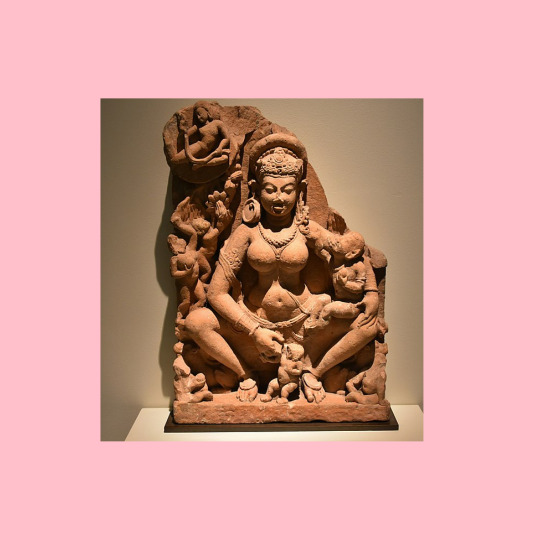
Week 1: Goddess Mut: "Lady of Heaven, Mistress of All the Gods"
Mut, also known as Maut and Mout, was an ancient Egyptian mother goddess. Her name means “mother” in ancient Egyptian.
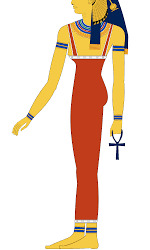
Mut-the-Great, "The Great Mother," is considered a primal deity, associated with the primordial waters of Nu from which everything in the world was born. Some legends say Mut gave birth to the world through parthenogenesis, but more often she was said to have a husband, the solar creator god Amun-Ra.
Mut was usually depicted as a woman wearing the double crown of the kings of Egypt, representing her power over the whole of the land. In art, Mut was pictured as a woman with the wings of a vulture, holding an ankh, wearing the united crown of Upper and Lower Egypt and a dress of bright red or blue, with the feather of the goddess Ma'at at her feet.
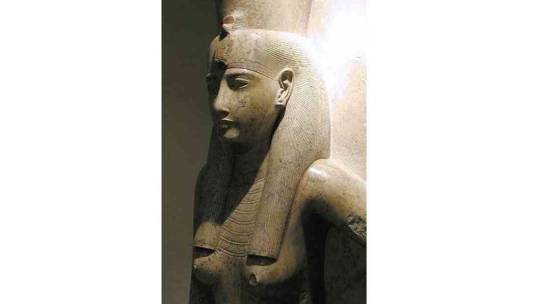
Mut never had the widespread popularity of some other goddesses, and was often an elite deity associated with kingly power. During the high point of her cult, the rulers of Egypt would support her worship in their own way to emphasize their own authority and right to rule through an association with Mut. Mut was worshiped in many ancient Egyptian festivals such as the Opet Festival and the Beautiful Festival of the Valley.
Her identity has merged at times with that of other more famous Egyptian Goddesses, such as Hathor and Sekhmet. As a result, Mut has been depicted as a cobra, a cat, a cow, and a lioness. However, she is frequently pictured with a vulture headdress, highlighting her role as a protective mother.
Surviving temples dedicated to Mut are located in modern-day Egypt and Sudan, reflecting her widespread worship. The center of her cult in Sudan became the Mut Temple of Jebel Barkal and in Egypt the Precinct of Mut Temple in Karnak. Surrounding the Mut Temple in Karnak, on three sides, is a sacred lake called the Isheru. During her rule in the Eighteenth Dynasty, the pharaoh Hatshepsut had the ancient temple to Mut at Karnak rebuilt.
Patricia Monaghan writes, “This creatrix, depicted variously as vulture, lioness, and crowned woman, was a punitive goddess in whose temple traitors were burned to death. She was associated with the period preceding the Nile’s annual flooding, when harvest had left the fields empty and the people relied upon stored foods. Some have theorized that she was an invented goddess, designed as a corollary to the important god Amun, but evidence shows her to be an early divinity of Thebes. (Ellis; Lesko; Müller; Wilkinson).”
During the reign of Rameses II a follower of the goddess Mut donated all his property to her temple and recorded in his tomb:
“And he [Kiki] found Mut at the head of the gods, Fate and fortune in her hand, Lifetime and breath of life are hers to command ... I have not chosen a protector among men. I have not sought myself a protector among the great ... My heart is filled with my mistress. I have no fear of anyone. I spend the night in quiet sleep, because I have a protector.”
Mut, her son Khonsu (who is a lunar deity) and her husband Amun formed The Theban Triad, which was particularly important during the New Kingdom period when Thebes was Egypt’s capital.
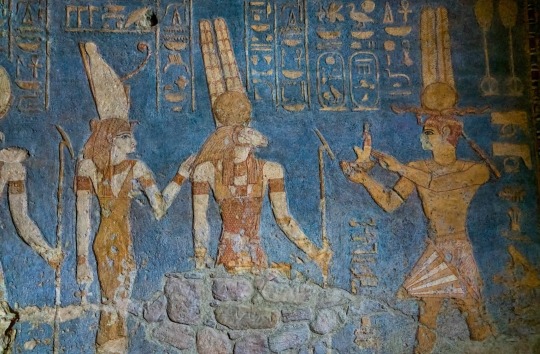
In the Payprus of Ani, there is a hymn to the Theban Triad:
“Hail to thee, O Amun, Lord of the thrones of the earth, the oldest of the gods, self-created, and creator of all things.
Hail to thee, O Mut, Lady of heaven, mistress of all the gods, the great mother, who gave birth to the sun.
Hail to thee, O Khonsu, the young, the beautiful, the beloved son, who brings light to the darkness and guides the traveler on his way.”
The following is a short excerpt of The “Crossword Stela” of Paser, circa 1150 BCE, found in the sacred Precinct of Mut is a hymn to Mut that can be read both horizontally and vertically”:
“Great of Sunlight, Who illumines the entire land with Her rays. She is His Eye, Who causes the land to prosper, the glorious Eye of Harakhty, the Queen of what exists, the Great and Powerful Queen, Life being in Her possession.
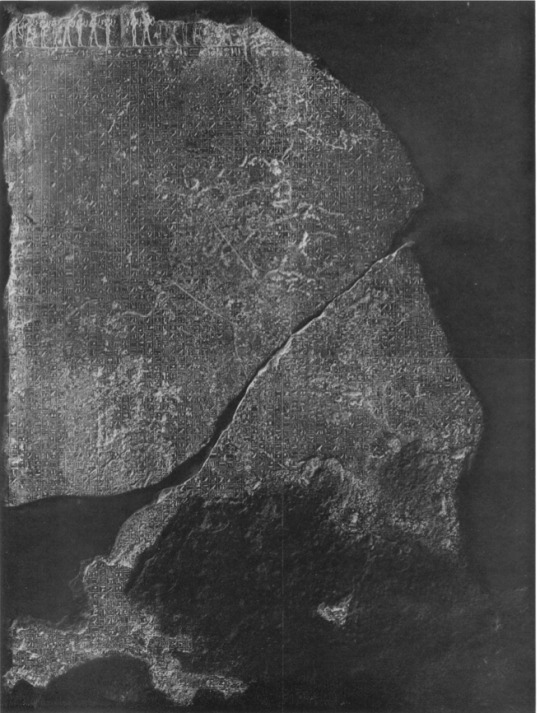
Great of Might, Her Eye has illumined the Horizon. As to the Ennead, Their hearts are glad because of Her, the Queen of Their joy in this Her name of Sky, for the spirits go forth within it because of Her.

The Two Lands and the Netherworld thereof are light because of Her, when She has appeared in the sky. When She goes forth, all good plants are born. She Who rises early, existing in a multitude of forms, enduring as the Nurse.
Ra sees Her Might just as She sees by means of Him, since He knows Her Majesty’s beauty. The Goddesses shout for Her: food and provisions for Her, the Goddess in Uaset-Thebes.
READING FROM MUT:
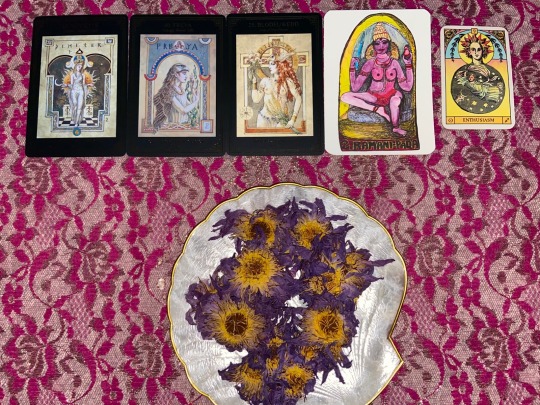
I asked Mut to describe herself and bring forth any messages she’d like to share.
16. Demeter: Devotion, Family Growth “Demeter, help me heal my grief and pain.”
40. Freya: Courage, Passion, Gifts “Call on Her for gifts of good and long companionship” “I will continue to be a beginning for all of my days, even until the very end.”
25. Blodeuwedd: Lady of the Nine Flowers She who refuses to be possessed. “Above all else, do not be possessed.”
Sri Ramani Pada: The Fulfiller of Wishes: “Sri Ramani Pada is a beautiful young woman. She is Icchanvati, the one who is wishful, because she has the powers of transforming through love any wish into a positive reality. She is a sensuous Yogini who frolics in the higher levels of consciousness.”
Enthusiasm: “This card describes someone who is energetic and outgoing, with a good sporty sense of fun and adventure."
Mut is a friendly Goddess, encouraging us to call upon her and build relationships with Her, regardless of our ancestry. She can transform our grief as well as be a companion to us as a face of the Divine Mother. She is particularly fond of being communicated with through intuition and astrology, and wants continued study of and research into Her myth. She is horrified by the destruction in Sudan and is with each of her children there that are suffering. Female devotees wishing for a baby are encouraged to ask her to aid in their fertility struggles. She feels the pain of all her children, and wants to help them restore their power and sovereignty through love.
More:
Etsy
Twitter: @SidraShakti
#vedic astrology#Goddess#Goddess Worship#Egypt#Egyptian Mysteries#divine feminine#sacred feminine#mother goddess#divine mother#hathor#egyptian gods#isis goddess#aset#inanna#venus#sekhmet#bastet#netjeru#kemetism#egyptology#ishtar#witchcraft#witches#witchcore#wicca#Mabon#shakti#tantra#durga#parvati
10 notes
·
View notes
Text
Non-food Gardens
While the change to settled agriculture during the Neolithic Revolution initially focused on food crops, it wasn't long until people began to keep gardens that were for pleasure and/or medicinal in nature. The ones that we remember are those that were set up by rulers.

By Noah Wiener , Hanging Gardens of Babylon … in Assyrian Nineveh - http://www.biblicalarchaeology.org/daily/ancient-cultures/ancient-near-eastern-world/hanging-gardens-of-babylon-in-assyrian-nineveh/, Public Domain, https://commons.wikimedia.org/w/index.php?curid=57158048
One of the oldest, though it may be a thing of legend rather than strictly history, is the Hanging Gardens of Babylon, which are supposed to have been built by Nebuchadnezzar II, who reigned between 605-562 BCE, for his wife Queen Amytis, who missed the green of her homeland of Media. The first record that we have of them is from 290 BCE by a Babylonian priest named Berossus. They've also been attributed to a legendary queen Semiramis. Some now think that they are actually the gardens of Sennacherib, who reigned from 704-681 BCE, in Nineveh. Part of the reasoning for this is that the the gardens in Nineveh have been found in the archaeological record, Babylon was used for many cities, even Nineveh itself, because it means 'Gate of the Gods' and was seen as a proper name for the place where the king reigned, and Sennacherib and Nebuchadnezzar left quite a bit of documentation and only Sennacherib records building them, including describing the screw system to bring water up to the gardens. They were considered a year-round lush green oasis that also spurred improved water supply to Nineveh to keep the gardens blooming.

By Chamal N - Own work, CC BY-SA 3.0, https://commons.wikimedia.org/w/index.php?curid=4499684
In Sri Lanka, the remains of a fortress called Sigiriya or Sinhagiri (which means Lion Rock and is written in Sinhala as සීගිරිය and in Tamil as சிகிரியா/சிங்ககிரி). With in this fortress is one of the oldest gardens in the world. There are three sections in the gardens, water, cave and boulder, and terraced gardens. These gardens are well preserved and we can see the planning of the gardens. These gardens were inhabited probably going back to prehistory, possibly as far back as 3000 BCE. In the 3rd century BCE, Buddhist monks began to occupy the area. In about 477 CE, King Kashyapa killed his father and took the throne. To have a more secure capital, he built a city on the top of the 200m tall rock, including the gardens. Many of the conduits in the water gardens are still working and help move water, especially during the rainy seasons.

By This file was donated to Wikimedia Commons as part of a project by the Metropolitan Museum of Art. See the Image and Data Resources Open Access Policy, CC0, https://commons.wikimedia.org/w/index.php?curid=60935732
Egypt had a rich culture of gardens, which probably started as a blend of fruit orchards and vegetable gardens, which gradually added flowers, ponds, and shade trees. These gardens were kept and tended in time with the rise and fall of the Nile, with the flooding of the Nile, then with canals or with water carried from the Nile in buckets. Pharaohs like Hatshepsut and Ramses III brought plants back from conquests to plant in gardens. In the New Kingdom (1552-1296 BCE), pleasure gardens moved began to be kept by the upper class, not just the ruler. They also began the practice of botanical gardens, which are a type of garden meant for education, research, conservation, or education. They even created models of gardens to be put in tombs of those who passed. A lot of work and knowledge went into keeping gardens in ancient Egypt, from carrying water, through to the manual propagation of date palms, and to protecting the garden from weeds and invading birds.
#gardens#historical gardens#sri lanka#egypt#babylon#sigiriya#hanging gardens#botanical gardens#human history
6 notes
·
View notes
Text
"Egyptian history, if you didn’t already know, is ridiculously long, and with a civilization spanning over 3000 years, it produced a long list of rulers. While most of these rulers were male, there were notable exceptions, including Hatshepsut. As is the case for most ancient female figures, we don’t know much about her early childhood except she was the daughter of a pharaoh, Tuthmose I, the wife of another, her half-brother, Tuthmose II, and the stepmother of Tuthmose III. She was royalty through and through."
Read the full article here:
#history#ancient history#Egyptian history#egypt#ancient egypt#egyptian pharaoh#pharaohs#hatshepsut#women in history#female pharaohs
3 notes
·
View notes
Text
"I Want to Explore...History!"
PART I OF THE "I'm Bored" SERIES

Hello everyone! And welcome to part I of the "I'm Bored" series I made in collaboration with @alvaconsumesmedia!
Below you will find a list of different historical content I personally recommend you research and consume if you find yourself bored and wanting to explore the world of history!
If you have any questions about this list, want more information about a person or event than is listed, or wish to make a recommendation as to what should be added, send me a message to my ask box!!

HISTORY TOPICS TO RESEARCH:
[LIST] The Sumerians, Reading Recs.・located in the historical region of southern Mesopotamia, emerging during the Chalcolithic and early Bronze Ages between the sixth and fifth millennium BC were the Sumerians - the oldest recorded civilzation in the entire world....also they invented writing, literature, and beer, so you know they were fun.
The Sedlec Ossuary・also known as the Church of Bones, the Sedlec Ossuary, located in the Czech Republic, is one of the most unusual chapels you will ever see as it is decorated with the real bones of some 40,000 people.
The Great Molasses Flood of 1917・if an inescapable tsunami wave of molasses charging 35 miles per hour toward you seems impossible...you should have been there to see it in Boston in 1919.
The Mouse Utopia Experiments・if you ever wondered what the horrifying real story that inspired The Rats of NIMH was...well you've found it here.
Subtropolis・SubTropolis is a business complex located 150 feet underground in an artificial cave in the bluffs north of the Missouri River in Kansas City, Missouri made out of an old mine that was, at one time, supposed to be an amusement park.
The Dancing Plague of 1518・a plague that hit the town of Strasbourg in 1515 that caused as many as 400 people to dance until they died.
The Demonic Possessions of Loudun・The best-known case of possession in Western European history took place in the French town of Loudun at the Church of Saint Peter where no nun was safe from demon possession.
The Tower of Silence・A dakhma, also known as a Tower of Silence was a structure built by Zoroastrians made to store decomposing dead bodies to keep them away from the city as to avoid contamination of the soil.
The Game of Hounds and Jackals・a popular game played in 1805 by the Egyptians. A copy of the game can be found today in The Met.
The Bloody Bender Murders・in the 1870s the Bender family opened an Inn in Labette County in Kansas and began murdering people who came to visit.
ART HISTORY TOPICS TO RESEARCH:
The "Le génie du mal" and the "L’ange du mal"・the St. Paul Cathédrale de Liège in Belgium, once upon a time, hired two artists both to make statues of the Devil to place in their church and, unfortunately for the nuns of St. Paul Cathédrale de Liège they were done just a little too well.
Albert Kahn's Archive of The Planet・It was Kahn's dream to document the entire world via photography, from 1909 and 1931 his team dispatched to accomplish this goal. However, when the great depression hit his dreams were smashed.
HISTORICAL FIGURES TO RESEARCH:
Carvaggio・Michelangelo Merisi da Caravaggio, known mononymously as Caravaggio, was an Italian painter active in Rome, disliked by many during his time for his arrogance, his rebellious nature...oh yeah, and he was a murderer.
Violet Jessop・Violet Constance Jessop was an Irish-Argentine ocean liner stewardess and nurse in the early 20th century who managed to survive THREE shipwrecks in her time, including the titanic!
Kate Warne・Kate Warne was none other than the first female detective in the United States, who worked for the Pinkerton National Detective Agency - the same agency that inspired many of the original Sherlock novels.
Hatshepsut・Hatshepsut was the Great Royal Wife of Pharaoh Thutmose II and, after his passing, was made the first ever Queen of Egypt...so why has no one ever heard of her?
Ching Shih・Zheng Yi Sao, also known as Shi Xianggu, Shek Yeung and Ching Shih, was the leader of the largest recorded pirate fleat to ever exist from 1801 to 1810 in China...also the pirate queen in the Pirates of the Caribbean movies was based on her...not really important but I think that's pretty cool.
Marie Vigoreaux・Marie Vigoreaux, was a French fortune teller and an active part of the famous Poison Affair of the 1670s.
Olga of Kiev・Olga was a regent of Kievan Rus' for her son Sviatoslav from 945 until 957 who is famously known for taking revenge on entire city by mass murdering them and then, after the deed was done, converted to Catholicism and becoming a patreon saint afterward...and, yes, she is still honored as a saint in Ukraine to this day
Wu Zetian・Wu Zetian, personal name Wu Zhao, was the first and only Empress of China, who ruled from 660 to 705 and she would do anything to ensure that she stayed in charge.
Julie D'Aubigny・Julie d'Aubigny, better known as Mademoiselle Maupin or La Maupin, was a French opera singer....but what's more exciting is that she was a bisexual, cross-dressing, swords-woman, and murderer.
Alexander the Great・Alexander the Great was the king of Macedonia (336–323 bce), who overthrew the Persian empire, carried Macedonian arms to India, and laid the foundations for the Hellenistic world of territorial kingdoms.
HOLLYWOOD HISTORY TO RESEARCH:
The Ava Gardner, Barbara Payton, Lana Turner Love Affair・known as the most scandalous love affair in Hollywood, Gardner, Payton, and Turner were secretly sleeping together for years....and Frank Sinatra was not happy about it.
NONFICTION HISTORICAL BOOKS TO READ:
[LIST] Medieval Religion, Reading Recs.・my list of reading recommendations to help you learn more about religion during the medieval ages.
ARTICLES TO READ:
"What Does God Smell Like?" by John Last・Unusual smells have been a distinguishing mark of holiness since the earliest days of Christian worship, so what is the smell of God?

That's all for history exploration! I hope that this helped you in curing your boredom! if you have any questions regarding anything discussed here or if you'd like to make a request to be added to the list, please send an ask to my ask box! I appreciate all comments and questions!
5 notes
·
View notes
Text



CABEZA EGIPCIA ( Egyptian Head)
A 3,500-year-old mummy head…
Belonging to an anonymous woman age 20-25…
This mummified head, which currently belongs to the Museo de Antropología Médica, Forense, Paleopatología y Criminalística in Madrid, Spain, was first described as the "beheaded head of a Guinean negress young woman."
Let that sink in…
Please take all the time you need…
The head's true origins were found only in 2007, when Moissidou and colleagues traced the mummified remains back to the Theban Necropolis archaeological area in Egypt…
The head's mummification technique made it possible to date it to the 18th Dynasty of the New Kingdom…
This is the best known ancient Egyptian dynasty as it includes several famous pharaohs, such as Hatshepsut, Amenhotep III, Akhenaten and Tutankhamun…
The researchers believe the woman lived in a period between the reign of Thutmose II and Thutmose III…
"Looking at the accurate embalming, we can say this lady was an important member of the Egyptian society of the time," Gonzalez said.
https://www.seeker.com/mummy-head-shows-ancient-egyptians-bleached-their-skin-1851531742.html
And for those of you who might be wondering why I chose to post a photo of a young Somali woman:—
“Egyptian tradition of the Dynastic Period held that the aboriginal home of the Egyptians was Punt”
SOURCE;
(Sir Ernest Alfred Wallis Budge, ‘A Short History of the Egyptian People With Chapters on Their Religion, Daily Life, Etc’; 1914)
Hatshepsut’s inscriptions claim that her divine mother Hathor was from Punt…
“The Egyptians sometimes called Puntland ‘Ta-Netjeru’, meaning "Land of the God," and considered it their place of origin”
SOURCE;
(Richard Pankhurst, ‘The Ethiopians’; 1998)
The greek historian Diodorus in his book ‘Universal History’ said that in the 6th century before Christ, because of a political crisis in Egypt and the Asiatic infiltrations in Egypt, more than 200,000 Ancient Egyptians migrated south of the Nile…
This last historical fact can explain why the Somali language is a survived ancient Egyptian language, according to the British linguist Charles Barber:—
“The language of ancient Egypt belonged to the Hamitic group; Surviving Hamitic languages are spoken across a large part of North Africa and include Somali."
SOURCE;
(Charles Barber, ‘The English language, A Historical Introduction’; 1993)
26 notes
·
View notes
Text

Day Seven: Neferure!
Neferure was an ancient Egyptian princess, who bore the unusual distinction of being the child of two pharaohs: she was the only child of Thutmose II and his wife, sister, and co-successor, the legendary Hatshepsut.
Hatshepsut’s reign as pharaoh was successful, but the accession of a woman led to a number of political and religious complications. The Pharaoh and his Great Royal Wife, as divine representatives on Earth, were meant to each perform a number of ceremonial duties; among other things, that she was now pharaoh meant that Hatshepsut could no longer serve as the high priestess of Amun. But Hatshepsut was used to successfully delegating; military affairs were in the hands of her co-ruler, Thutmose III, and she placed these ceremonial and religious duties in the hands of her daughter.
Neferure was prepared. She had been well-educated as a child - one of her tutors was now her mother’s top advisor - and as she grew older she played not only a ceremonial but a political role at court. Indeed, she held an unprecedented degree of power for an uncrowned royal daughter.
Neferure is never known to have married, and it is likely she slightly predeceased her mother, though some historians differ on each of those points. Her tomb has been lost, and efforts were made by later pharaohs to erase her memory. What has been found, however, paints a picture of a scholarly politician, a loyal daughter, and a key player during a pivotal time in Egyptian history.
#neferure#egyptian history#ancient egypt#eighteenth dynasty#history#awesome ladies of history#my art#pen and ink#october 2024#incest mention
6 notes
·
View notes
Text
Hatshepsut and the Temple of Luxor
Greetings from the fabulous boat traveling up the Nile.
The actual date is Sept 26 - but sadly I’m still writing about September 22. After we visited the Valley of the Kings we drove around the valley to another valley to find the back door entrance to the Temple of Queen Hatshepsut - Egypt’s first know female monarch. She ruled for 20 years in the 15th BCE and is considered one of Egypts’ most successful pharaohs. Now Hatshepsut (pronounced "Hat- cheep- suit" - not how I had learned earlier “hot shit soup”) did NOT want to be buried in the Valley of the Queens - but in the Valley of the Kings.

Her tomb connected the building below with an entrance in the Valley of the Kings. Think about that for a minute. The engineers connected a tomb through the mountains. She secured her legacy by building structures that still stand today. She added two hundred-foot-tall obelisks at the great temple complex at Karnak. (One is still intact and we saw in on that very, very hot day exploring Karnak) She also built the mortuary Temple of Deir el Bahri, a structure with several floors of columns in front, where she’d eventually be buried. Here is what we saw:




Considered one of Egypt's greatest pharaohs—man or woman—Hatshepsut brought great wealth and artistry to her land. She sponsored one of Egypt's most successful trading expeditions, bringing back gold, ebony, and incense from a place called Punt (probably modern-day Eritrea, a country in Africa).

Available for your viewing in the NY Metropolitan Museum of Art.
Hatshepsut was usually carved or drawn as a man, complete with muscles and a beard, as was the artistic tradition for pharaohs. But historians knew the truth: She always made sure the art included a reference to being a woman, such as “Daughter of Re” or “His Majesty, Herself.” When she died in 1458 B.C., Egypt would not see as powerful a female ruler for another 1,400 years, when Cleopatra came to the throne.
After we saw Hatshepsut’s impressive tomb we headed back to our hotel for some R&R. But that evening, we were at it again and this time exploring the Temple of Luxor.
AGAIN - WOWZA!!!
From the official webpage:
Luxor Temple, Ipet-resyt “Southern Sanctuary” to the ancient Egyptians, was so called because of its location within ancient Thebes (modern Luxor). It is located around three kilometers to the south of Karnak Temple, to which it was once linked with a processional way bordered with sphinxes. The oldest evidence for this temple dates to the Eighteenth Dynasty (c.1550–1295 BC).
Ipet-resyt, unlike most other ancient Egyptian temples, is not laid out on an east-west axis, but is oriented towards Karnak. This is because Luxor Temple was the main venue for one the most important of ancient Egyptian religious celebrations, when the cult images of Amun, his wife Mut, and their son, the lunar god Khonsu, were taken from their temples in Karnak, and transported in a grand procession to Luxor Temple so they could visit the god that resides there, Amenemopet. This was the Opet Festival.
Luxor Temple was not built by one single ruler. The oldest existing structure, a shrine, dates to the reign of Hatshepsut (c.1473–1458 BC). The core of the temple was built by Amenhotep III (c.1390–1352 BC). One of the inner rooms contains a series of scenes that are known as the Divine Birth. They tell the amazing story of how the king’s true father was none other than the god Amun-Ra himself, disguised as Thutmose IV (c.1400–1390 BC). The core of the temple is preceded by a columned hall fronted by a courtyard with columns around its perimeter. Amenhotep III also built the Great Colonnade, which consists of two rows of seven colossal columns. Its decoration, most notably the scenes depicting the Opet Festival, were completed by Tutankhamun (c.1336–1327 BC) and Horemheb (c.1323–1295 BC).
Ramesses II (c.1279–1213 BC) made many additions to Luxor Temple. In front of the Great Colonnade, he built a peristyle courtyard and a massive pylon, a gate with two towers that formed the entrance into temples. In addition to many colossal statues, the pylon was also fronted by a pair of 25-meter-high obelisks made by this great king, but only one remains in place; the other has been at the Place de la Concorde in Paris since 1836.
In the late third century AD, the Romans built a fort around the temple, and the first room beyond the hypostyle hall of Amenhotep III became its sanctuary. The original wall reliefs were covered with plaster, and painted in the Graeco-Roman artistic style, depicting Emperor Diocletian (284–305 AD) and his three coregents. Although these had largely disappeared, efforts are under way to restore these reliefs to their former glory.
This magnificent city was covered deep in mud until the 1860s. Take a look at these photos:



Here is the one I took:
Likewise the 1.7 mile road that connected this temple to Karnak, Avenue of the Spinxes was also buried.


The first trace of the avenue (at Luxor) was found in 1949 when an Egyptian archaeologist discovered eight statues near the Luxor Temple with 17 more statues uncovered from 1958 to 1961 and 55 unearthed from 1961 to 1964 all within a perimeter of 250 meters. From 1984 to 2000, the entire route of the walkway was finally determined, leaving it to excavators to uncover the road. The original 1,057 statues are along the way, and they are divided into three shapes;
The first shape is a lion's body with a ram's head erected on an area of approximately 1,000 feet between the Karnak temple and the Precinct of Mut during the reign of the ruler of the New Kingdom Tutankhamun.
The second shape is a full ram statue, built in a remote area during the eighteenth dynasty of Amenhotep III, before being transferred later to the Karnak complex.
The third shape which includes the largest part of the statues is a statue of the Sphinx (body of a lion and head of a human), the statues extend over a mile to Luxor Temple.
Here are those shapes:



Cool huh? While I was researching Temple of Luxor, I discovered a 3 minute video by Rick Steves about Karnak. It is truly worth your time.
youtube
I LOVED this temple! It was evening, temps in the high 80s and we had complete shade - and MAYBE that had something to do with it - but it was just so fabulous. This temple - like all religious sites of significance - was built upon. There exists a working Mosque and a former church with the ground of the temple. Check out the Mosque to fully understand just how deeply this temple was buried. There was no basement here friends.

Here is what is left of the church.

Some of the best statues were found there - I thought…



Above is an indication of the Pharoah’s power. Captives from many regions.
And while we were there a Scarab Beetle landed on our friend, Keith’ shirt. A CERTAIN sign of good luck.

It was a great visit…

Here is a 3 minute video - no words - but it gives you a great look at what we saw. Enjoy.
youtube
Tomorrow - we start the day with a hot air balloon ride and then drive to our boat. WHAT A TRIP!!!
Salam
2 notes
·
View notes
Text
Hatshepsut
Hatshepsut was the Great Royal Wife of Pharaoh Thutmose II, and was the fifth pharaoh of the Eighteenth Dynasty of Egypt. She was first ruling as regent, then as queen regent from c. 1479 BC until c. 1458 BC. She was also Egypt's second confirmed queen, with the first being Nefrusobek/Sobekneferu in the Twelfth Dynasty.
To continue, Hatshepsut's name meant, "foremost of noblewomen", was said to be one of the most amazing and successful pharaoh's in Egyptian Culture back then and still to this day. Also, Hatshepsut begin her reign as regent to her nephew who was Thutmose III. To conclude, Hatshepsut was one of the most important and significant pharaoh's in Egyptian History.

5 notes
·
View notes
Text
Anniversary of Schiaparelli's discovery of Nefertari's tomb
The Italian antiquities mission led by Cecchiaparelli discovered Queen Nefertari's tomb in 1904 Today marks the anniversary of the discovery On that day, the world witnessed a rare emergence of ancient Egyptian art, in which many mysteries were revealed Since its discovery.
In 1904, Nefertari's tomb remained closed to the public until the early 1990s because of salt deposition that damaged some of the inscriptions and embellishments. The tomb's entrance is orientated towards the east The sky is reflected in the cemetery's ceiling At night, the sky is dark and dotted with golden stars It has a bluish tint and is dark black in color as opposed to the god Anubis's complete black hue you can check more details about Egyptian beauty and Egyptians tours through Egypt Day Tours. The tomb is filled with colorful frescoes and inscriptions, and a wall mural shows the queen playing a chess-like game.
Nefertari means "the beautiful companion," and the name has other translations such as "the unparalleled beloved," "the beautiful of the world's beauties," or that she resembles the star that emerges at the start of a new year. Nefertari is one of the most well-known Egyptian queens, such as Cleopatra, Nefertiti, and Hatshepsut During the 13th century BC, during the Nineteenth Dynasty, King Ramses II had the most well-known and significant wife, Nefertari if you want to know more about Egyptian historic and tours you can check cairo top tours Egypt Travel Packages with best prices. ramses other wives included the Hittite princess Matneferu Ra and Setneferet. His progeny totalled over 90 boys and daughters. Among his offspring were Prince Khawaset, Setnakht, King Merneptah who succeeded him, and the princesses Bint-Anta and Meritamun, who were the brides of their fathers For Ramesses, Nefertari had numerous offspring, but none of them outlived their father .
Nefertari died in 1250 BC, however, this is not clear because she most likely died between the ages of 40 and 50, implying that she died after ruling for approximately 25 years Her husband, Pharaoh Ramesses II, built her the largest and most beautiful tomb in the Valley of the Queens, which is both unique and a fantastic example of clever ornamentation you can involve into nifrtari life and explore more secrets through Egypt Desert Safari Tours your best choice mausoleum was embellished with beautiful colors and artwork depicting her daily life.
IN 1986, the Getty Conservation Institute collaborated with the Supreme Council of Antiquities to restore this unique tomb, which was then opened to the public for a restricted number of visitors, check more info and incredible tours via Egypt Shore Excursions to find out the best tours However, in March of this year, the tomb was closed to monitor humidity levels and assess the feasibility of reopening it under controlled conditions to safeguard it from potential damage caused by excessive visitor traffic.
TO summarize, during egypt tours you can discover egypt secrets the Egyptian civilization represents unprecedented creativity in the globe, generated by the hands of ancient Pharaohs who built temples, pyramids, and statues.
@cairo-top-tours
1 note
·
View note
Text
Cleopatra's Heritage
Her name means “father’s glory,” in the sense of “glorious lineage” (from the Greek κλέος, kleos, “glory,” and πατρóς, patros, “of the father”). Cleopatra isn’t actually Egyptian, but Greco-Macedonian.
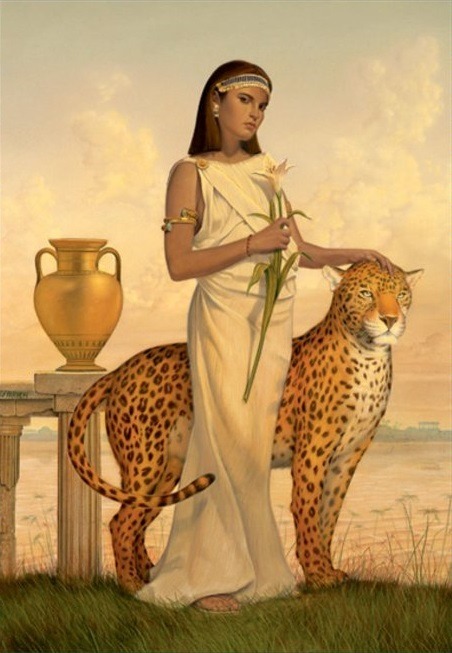
Although we perceive her name as unique in history and belonging to an equally unique queen, she was not the only one to be called that. We know of six others preceding her, which is why, to avoid any confusion, modern historians refer to her as Cleopatra VII. Why were there so many Cleopatras? The reason is that it was customary among the Ptolemies to use recurring dynastic names (like the French kings did with Louis).
Consequently, the princesses invariably had one of these three names: Arsinoe, Berenice, or Cleopatra.
Cleopatra’s Egypt was very different from what we all imagine. There are respectively 1,200, 1,300, and more than 1,400 years between her and other famous Egyptian women such as Nefertari (Pharaoh Ramesses II’s wife), Nefertiti (Pharaoh Akhenaten’s wife), and Hatshepsut. It’s like comparing a modern woman with one who lived at the time of Charlemagne or the early-medieval Lombards.
Cleopatra lived in a completely different Egypt, a kingdom already invaded and ruled by Persians for quite a few centuries before being conquered by Alexander the Great, who then started the Greco-Macedonian Ptolemaic dynasty that remained on the throne for another three centuries or so.
Source: Cleopatra - The Queen who Challenged Rome and Conquered Eternity by Alberto Angela
#cleopatra#antony and cleopatra#ancient egypt#ptolemaic egypt#egyptian history#ptolemaic dynasty#queen cleopatra#book quotes
10 notes
·
View notes